Occasionally I rerun a favorite older post, usually because most current blog followers have never seen it. This time my motivation was sparked by a couple of recent requests to use this particular post and/or the images it contains for conservation and education purposes. Those requests reminded me of how important I think the message of this particular post is and since it’s been over nine years since it was published I decided it was past time for a rerun.
For this version I’ve edited the text, tweaked the formatting and made a slight change to the title. If you’ve seen the earlier version of this post recently it’s because I may have linked to it in another post.
If there’s a group of birds on the face of the earth that is almost universally loved it seems to me that it would have to be owls.
Folks are captivated by owls for their large forward-facing eyes, quizzical expressions, eerie vocalizations and the sense of mystery provided by their generally nocturnal habits. Others are intrigued by their many unique adaptations including silent flight and their ability to turn their heads 270 degrees.
There’s just something about owls…
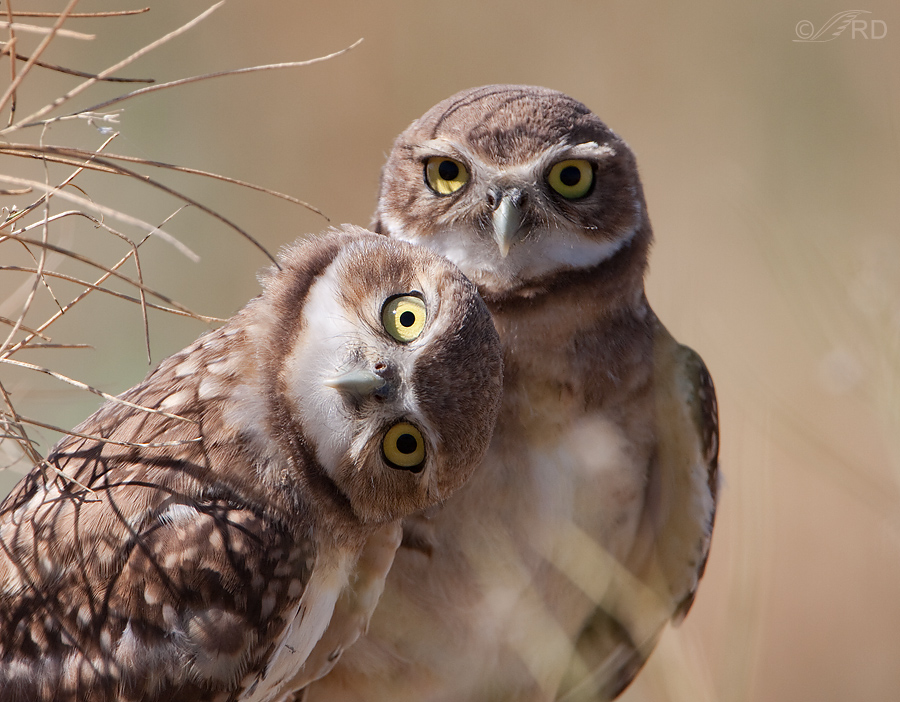
For many of us Burrowing Owls are at the pinnacle of that adoration. Their comical antics, especially those of the juveniles, tug at our heartstrings and make us smile. And Burrowing Owls are more accessible to viewing than most owls because they’re active during daylight and spend much of their time on the ground close to their burrows instead of being hidden high up in trees.
As a result of their accessibility, Burrowing Owls are extremely vulnerable to unthinking human intrusion, especially while they’re nesting and caring for chicks or juveniles.

1/4000, f/6.3, ISO 500, 500 f/4, 1.4 tc
In Utah the burrows of these owls are typically found among sagebrush, which they often use as perches during early morning. This allows the patient and ethical birder or photographer a good look at the birds without having to get too close in order to see through obstructing vegetation near the burrow.
It’s not unusual for Burrowing Owls to nest close to roads and when they do they become accustomed to traffic. If you stay in your vehicle and are patient with them they will go about their normal, natural business without being unduly disturbed. But one must be mindful of any sign of nervousness, especially during nesting season.
If the owls begin to bob their heads and “chatter” you are too close. These owls will abandon burrows and nests with too much human disturbance and their burrows may collapse from foot traffic so the burrows should never be approached closely. The populations of Burrowing Owls in North America have declined sharply in recent years from the cumulative effects of human activity and they have been listed as a “Species of Special Concern” by the US Fish and Wildlife Service in several western states, including Utah.
They deserve our respect and need our help..
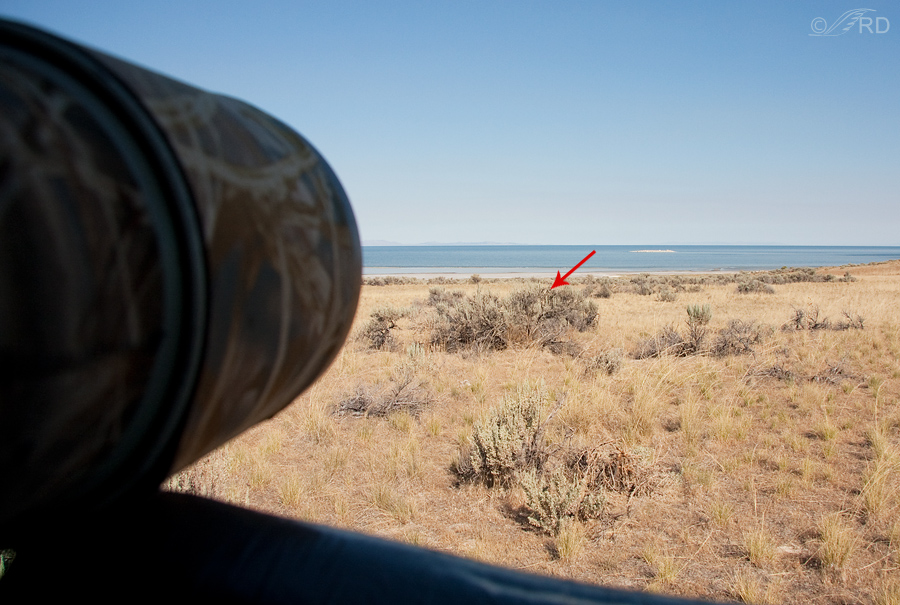
When I photograph Burrowing Owls on Antelope Island I always shoot from my pickup from the edge of the road. When their burrow is close to a road they usually become accustomed to vehicles but as soon as you exit your car their behavior immediately changes and they generally fly off so I never even open the door. However, when they’re caring for chicks or juveniles they’re much more reluctant to leave the area so they will typically fly a very short distance and show signs of alarm and stress.
I’ve included the photo above to show you a typical scenario when I’m photographing Burrowing Owls from my pickup. The red arrow marks the owl.
Now to the heart of the matter. When I first started photographing birds there were Burrowing Owls near some rock piles southeast of the visitor center on Antelope Island and that burrow had been active for several years. Then one spring about five years ago they abandoned their burrow. I asked one of the employees at the visitors center what happened and he told me that the owls had been “loved to death” by human visitors to the island.
Too many people had pushed them too far from too close.
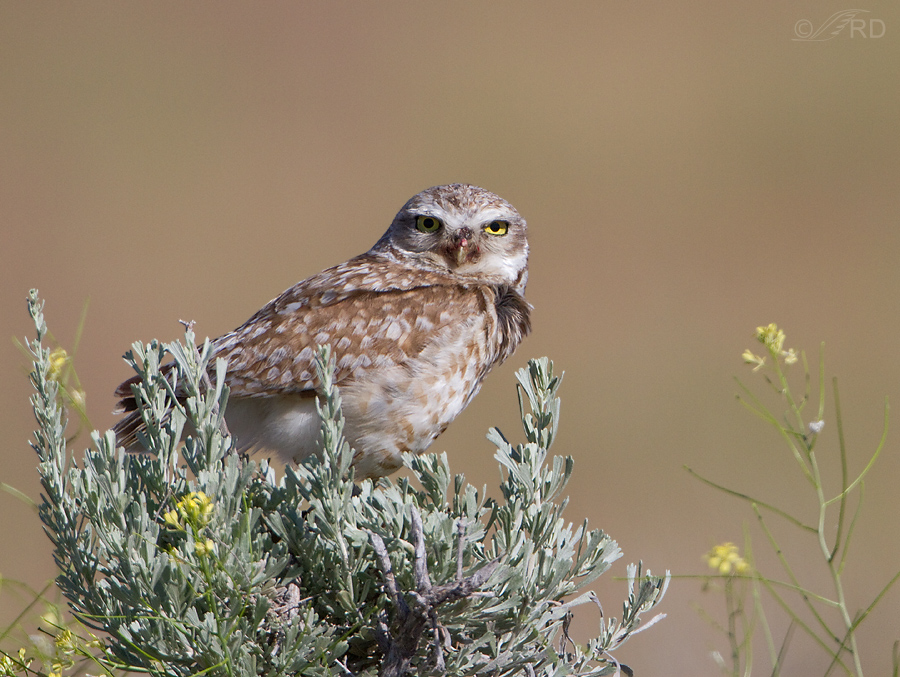
Then I found another active burrow close to the road and photographed those birds for several years. They were acclimated to traffic and not disturbed if folks watched and photographed them from their vehicles. Early in the spring last year an obviously mated pair of owls showed up at the burrow and set up residence.
But as I drove by the burrow on the morning of March 13, 2011 I was aghast at what I saw – a group of birders and photographers had left their cars and were walking over the burrow area, including tramping right over top of it. I never once saw two owls at the burrow after that day. One of the owls, the one in this photo, stuck around until mid-summer but after that it was gone and no chicks were produced that year at the burrow.
While this owl was still there it would chatter in alarm and hide low in the sagebrush or fly off almost every time a vehicle stopped along the road – a behavior it had never exhibited before. I got very few images of this bird after “the incident”, partly because I didn’t want to disturb it further. This was one of the last shots I got of that owl, taken on 6/22/11.
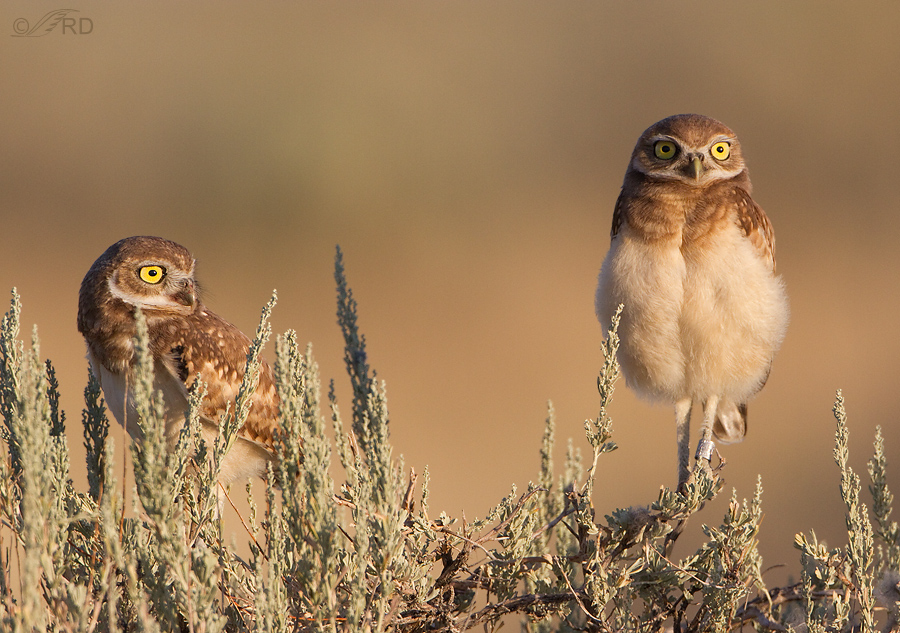
Thankfully, a pair of owls showed up at the same burrow area this spring and raised a clutch of chicks. I’ve seen at least four of the fledglings and these are two of them. As you can see from their unmarked, buffy bellies these birds are still very young and they have been banded.
At this age they spend much of their time on the ground hiding in the sagebrush and grasses while waiting for the parents to bring them food. It’s a bonus to catch them up on the sagebrush in good light like this.
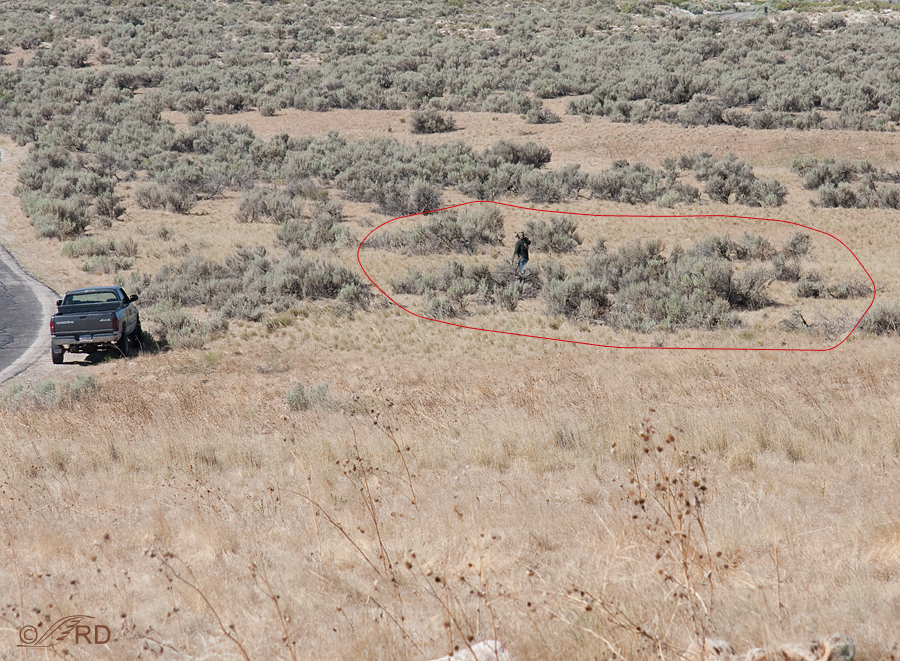
Then it happened again.
Last Wednesday, 6/27/12, as I drove by the burrow area there was a photographer who had left his vehicle and was photographing the owls at extremely close range in the immediate vicinity of the burrow and all the sagebrush that these owls habitually perch on (outlined in red).
As I drove by with my windows down I could hear the adult owls screeching and chattering in alarm at his intrusion. I drove further up the road, then turned around and watched what was happening through my lens. The image quality of these last four shots is poor because I was so far away from what I was photographing. In this photo the photographer is walking toward one of the adult owls after he had flushed it to a new perch.
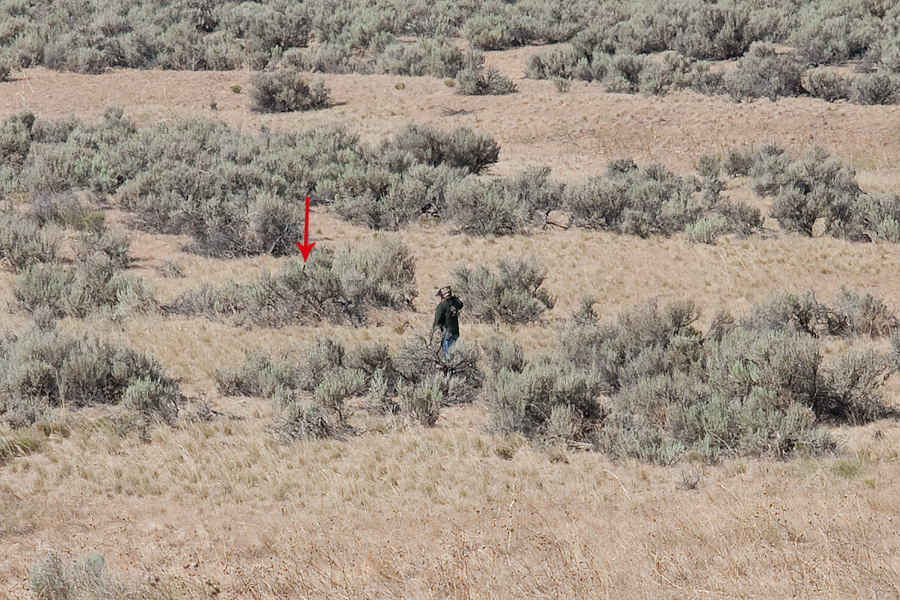
In this extreme crop of the previous image you can more clearly see the owl the photographer is approaching. At this point I was upset by what I was seeing so I left the area.
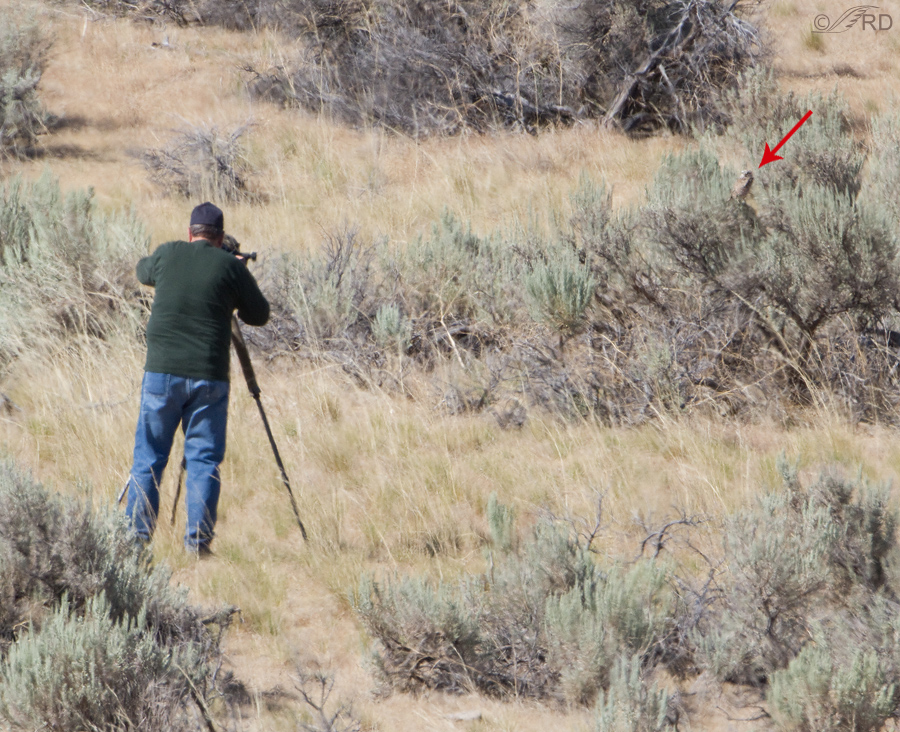
49 minutes later I returned to a slightly different vantage point and the photographer was still tramping amongst the owls. Of course the chicks were trying to hide in the grasses and sagebrush but the adult was reluctant to fly off very far with the youngsters in such a vulnerable situation.
The photographer had been photographing the adult owl on the right when he apparently saw one of the chicks on the ground and was aiming his lens at it in this photo.
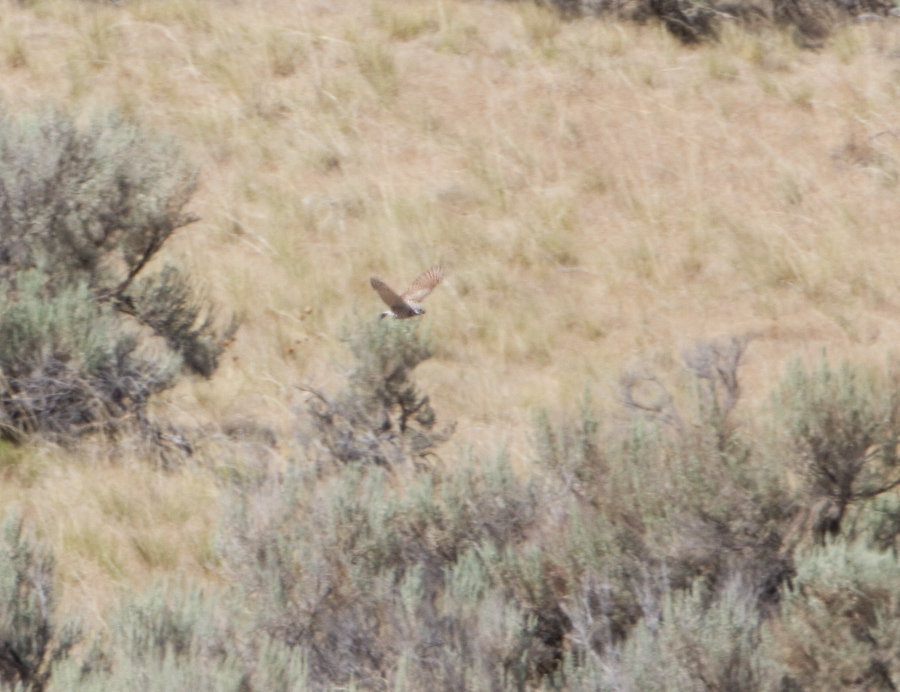
When the photographer would get too close the adult would flush and fly to another nearby sagebrush and the photographer would attempt to approach it again. This happened repeatedly.
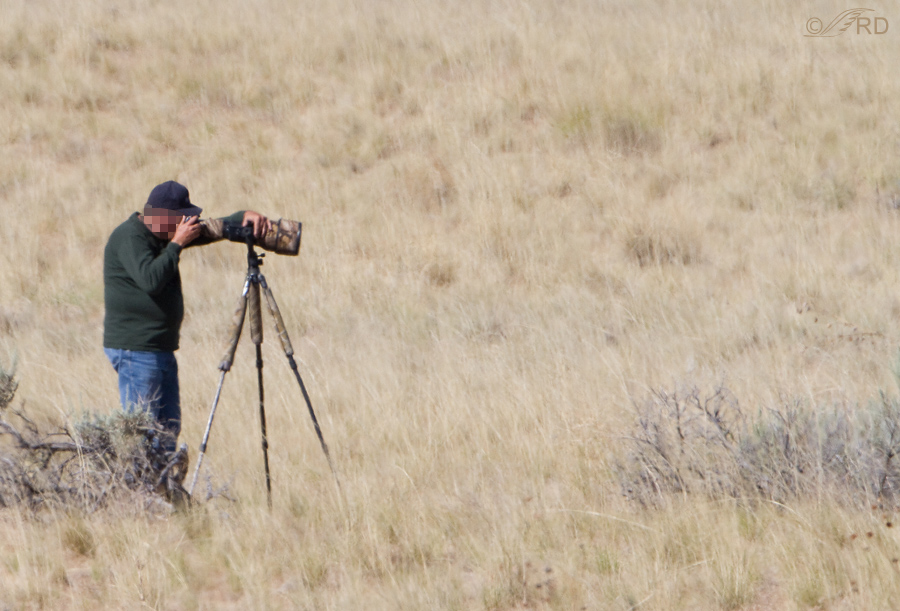
You can extrapolate just how close this photographer was to one of the owls (out of frame to the right) by noticing the angle of his lens relative to the ground.
Please, lets all of us give Burrowing Owls the space and respect they need and deserve. If birders, bird photographers and the general public don’t start policing themselves I’m afraid restrictive regulations will be put in place to better protect these fragile birds (and others) from being “loved to death”. If we don’t do it, someone else will surely do it for us and it won’t be pretty. If that becomes necessary, everyone loses, including the owls.
“The Shot” simply isn’t worth it..
Ron
Notes:
- All of these images were taken recently from my vehicle at the sagebrush patch referred to in the post with the exception of the first photo, which was taken several years ago along the causeway to Antelope Island.
- I made the conscious decision not to challenge the photographer for what he was doing. As evidenced by his expensive gear this guy was a seasoned photographer who knew exactly what he was doing and didn’t care. I know from experience that challenging someone like him is a recipe for a very unpleasant confrontation that could quickly escalate, especially given my very strong feelings about his despicable behavior. In the same situation I’d make the same decision again. I pick my battles.


Thank you always for speaking up for the owls.
I appreciate how you use your blog not only to share snapshots of the lives of beautiful birds, plants, and nature (and of course, yourself) but you also set an example of how one shows respect towards wildlife.
In the words of Steve Irwin, “I don’t give a rip. You don’t compromise an animal’s health.”
Thanks for the very kind words, Amy.
I miss ol’ Enthusiastic Steve, as I used to call him.
Seeing this post again makes me angry and frustrated all over again! I mean at the clueless people who have no real appreciation for the fragility of the landscape or the wildlife that make their homes within it. They’re just in it for themselves. Sad to think the events you photographed a decade ago continue to this day, despite all the efforts to educate the public.
Adorable owls, of course, are a most welcome sight here anytime (and help lower the blood pressure)! ♥️
“and help lower the blood pressure”
I’m pretty sure they help to lower mine, Chris. And my BP needs all the help it can get.
As you know, owls (all of them) fill me with awe and wonder. And respect.
It is early here but I have tears pricking at my eyes at seeing yet another example of unthinking greed from our species towards another. I am so often ashamed of so many of us.
Overall we’re a pathetic species aren’t we, EC.
YES.
The burrowing owls in my area lost their habitat due to development, but thankfully there is still a lot of desert here. Every time I drive by a section of undisturbed land, I know that it too will be be turned into homes or businesses. Makes me sad, however life goes on.
“Development” – I hate that word. I’m even beginning to feel the same way about the word “progress”.
Amen! I try to educate how disruptive and destructive this can be to nesting owls when I can. Some people with cell phones getting photos frequently really don’t know but the photographers with the big guns do and choose to do wrong. I don’t know if I have changed anyone’s behavior but I try. You know I have had my run ins. I am battling less and photographing photographer and license more and reporting.
Last time I was at Silver Lake where one of the beaver dams was, I ran into a woman standing on the lodge! I asked her nicely to get off and stay within the roped viewing areas and explained why. She was deaf to my reasoning so I started taking photos of her on the lodge and I said ” Well I saw a law enforcement truck in the parking lot, I am sure they will be interested in the photos I took of you.” It worked and yes there was a Parks Forrest Service employee not DNR and I showed him.
“the photographers with the big guns do and choose to do wrong”
Exactly, April. That kind of photographer is fully aware what they’re doing is unethical. And often illegal.
I’d be happy to wake up to your Owl photos everyday.
Geez, I feel badly just chasing off the birds to fill the feeders in my yard.
I just read about the woman being convicted of harassing Grizzlies in Yellowstone. One small step….
Yeah, she was clueless wasn’t she, Lyle.
Whenever I have to drive past birds perched on fenceposts on my right (the wrong side for photographing out my window) along remote roads when I’m out shooting I always pull to the far left side of the road in hopes I don’t flush them. Birds need all the energy they can muster for their everyday activities.
Thanks for the post!
I love burrowing owls ever since I saw them in Florida. Luckily in Florida, where I’ve seen them, they have the areas where the birds are in the neighborhoods cordoned off.
Joanne, I know they do that for some of Florida’s nesting shorebirds too.
I admit that at one point years ago I was one of those who were unaware of the damage done by getting too close to get “the shot”. It is through efforts of people like you who educate us that these birds will survive. Thank you Ron.
I wonder if a quick call to park headquarters would have brought a ranger out to get this guy back on the road. His actions could be considered harassment under the MBA. I know the exact spot that you are referring to and maybe a sign allowing you to pull over but not exit your vehicle would help ? .
Gary, I think signs would be helpful with some folks but others would continue to act this way if they think they can get away with it.
Disgusting
Yup.
You would think that photographers involved with nature would be much more considerate, but I guess their greed for outstanding photos exceeds their respect for nature. I do all my bird and wildlife photography on foot and so I know that I must be very careful to not make any moves that would upset those I am trying to get photos of. None of the birding friends I know would tramp through that Burrowing Owl’s nesting area. Very sad, but thanks for posting this.
“their greed for outstanding photos exceeds their respect for nature”
That’s it exactly, Everett.
We have the same problem here in Georgia on our beaches. Photographers, many well known, so absorbed with getting their ‘shot’ (and absorbed with themselves imo) have caused nest abandonment of some of our threatened shorebirds that nest in the open on the sand on the foredunes. They take great pride in getting the low perspective WA shots by belly crawling to the nest site. Even when the parents are displaying their broken wing behavior desperately trying to distract the intruder.
It is indeed despicable behavior, but unfortuantely too often reinforced rather than discouraged in “How To” tutorials. This is why when I became aware of Nature First I immediately joined.
Steve, I’m aware of the names of many of those “well known” photographers who photograph birds unethically and often illegally in Florida and Georgia.
Some of them have a wide reputation for such behavior but they don’t care as long as the get “the shot” so they can sell it to publishers and elsewhere. To them it’s just a business and to hell with the ethics and legalities, as long as they don’t get caught red-handed by the authorities.
I know quite well that you (rightly) don’t like people copying your posts to social media but if you would allow me to repost this to Twitter I think the educational value behind this post is something more people should see. If people like this photographer cannot be reasoned with perhaps they can be shamed into changing their behaviour? I will await your response (and hopefully your permission).
Granny Pat, I never have a problem with folks posting links to my blog posts to social media or elsewhere. So if you’re talking about posting the link (rather than copying and pasting the photos and text), go for it.
Thank you for posting this. I used to work at Golden Gate Audubon in Berkeley, CA and we ran a docent program in Cesar Chavez Park to try to educate the public and protect an ever-dwindling number of Burrowing Owls that used to nest there. I was shocked by the numbers of people (especially people with off-leash dogs, which was against park rules) who could not be bothered to curtail their activities in the slightest, despite copious signage, barriers and a conversation with one of our docents. I had never heard of this species before that job, and now they are one of my favorites birds.
(And yes, I’m an avid birder but birders are often part of this problem, much to my shame.)
“And yes, I’m an avid birder but birders are often part of this problem, much to my shame”
Stephanie, I feel the same way about far too many of my fellow bird photographers. I guess all we can do is keep trying to get the word out.
SO SAD…… just before I read your second note, I was thinking–look at this guy’s photo gear– he’s clearly no novice– and yet look what he’s doing !
I hope one of your readers recognizes him from your photos and tells him to
check out his “starring” role in today’s post….I know what you mean about having to choose one’s battles with selfish jerks…..
Kris, not long before this incident I did approach another group of novice photographers who were too close to the owls and explained the implications of what they were doing. I think they were simply unaware because immediately after I spoke to them they gave more space to the owls.
My thoughts too! Let’s hope he’s shamed by someone!
Terri, mostly I hope that enough folks will see this post for it to make at least a small positive difference for owls.
Done. Hope it helps.
Me too.
I agree with you whole heatedly. It’s a shame more people cannot be more respectful of nature around us.
It sure is.